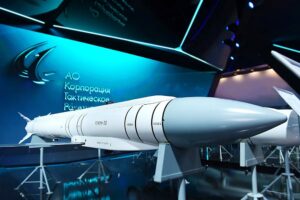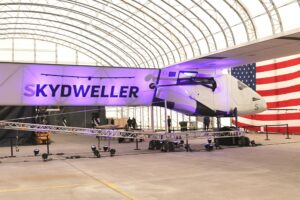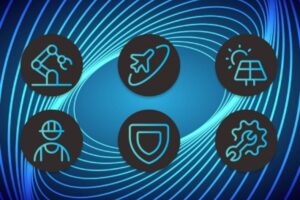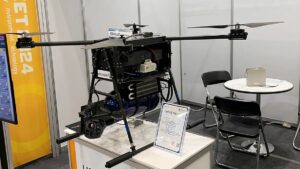Choosing your first drone is a big step into an exciting world of aerial photography, FPV (first-person view) flying, or just pure fun in the sky. But with so many options out there, it can be tough to know where to start.
That’s why I’ve put together this guide to the best beginner drones, each carefully selected based on ease of use, value, and features that make flying as stress-free as possible.
We’ll dive deeper into the best beginner drones below, but if you want a quick list of top options for first-time flyers, here are the ones I’d recommend considering:
The best drones for beginners
Here’s a quick comparison of some of the key specs on these four drones:
| Drone | Weight | Camera Quality | Flight Time | Key Feature | Price |
| DJI Neo | 135g | 4K/30 fps & 12 MP | 18 minutes | Most beginner-friendly | $200 |
| DJI Mini 3 | 249g | 4K | 30 minutes | Lightweight and affordable | $419 |
| DJI Avata 2 | 377 grams | 4K (wide-angle lens) | 23 minutes | Ready-to-fly- FPV experience | $999 |
| DJI Air 3 | 720g | Dual Cameras (48MP/12MP) | 46 minutes | Multiple camera options, obstacles | $1,099 |
| Autel Evo Nano+ | 249g | 50MP | 28 minutes | Excellent camera quality, non-DJI option | $679 |
And with that, here’s a deeper dive into how I made these picks:
DJI Neo: best if you don’t actually want to fly manually
The DJI Neo stands out from the rest of the drones on this list—it doesn’t have a controller, it’s designed to take off right from the palm of your hand, and it records sound via DJI Fly app. Oh, and it’s also incredibly inexpensive for a drone (only $200).
You can buy a remote control for the DJI Neo, but DJI encourages you to let the drone handle the filming on its own. You just choose a pre-programmed flight path—like “follow me” mode or zoom in/out—and the drone will do the rest. Once it’s finished, it’ll return right back to the palm of your hand.
The DJI Neo is also the lightest on the list weighing only 135g, however, it has a flight time of 18 minutes which is a significant downgrade from most under 250g DJI drones. The DJI Neo is more of a selfie-taker, than a drone, although it is certainly a major step up from your selfie stick (or long-armed friend).
Pre-order the DJI Neo now from:
DJI Mini 3: the best overall drone for beginners
If you’re new to drones, the DJI Mini 3 is the perfect starting point for someone seeking more of that manual flying experience that Neo doesn’t offer (but still at an entry-level price tag). This drone packs a lot of power into a small, easy-to-use design. At just under 249 grams, it’s not quite as small as Neo, but still incredibly light and small. As is the case with Neo, you don’t need to register it with the FAA, saving you a bit of hassle right from the start.
I’d recommend the DJI Mini 3 to anyone who wants a mix of quality and affordability. It offers impressive flight stability, a decent 4K camera, and enough battery life to keep you in the air for about 30 minutes per charge.
I learned to fly with the DJI Mini 3, and believe it’s a great drone to learn from. It’s not only easy to handle but also offers a great balance of the high-quality you expect from DJI drones and affordability, so you can dive in without worrying about breaking the bank.
Plus, the DJI Mini 3 is the cheapest it has ever been.
If cost isn’t a concern for your first drone, consider upgrading to the DJI Mini 4 Pro. It has everything the DJI Mini 3 offers, with one major bonus: omnidirectional obstacle sensing. This feature makes the drone practically crash-proof, giving you the extra peace of mind all beginner drone pilots want.
Purchase the DJI Mini 3 now from:
DJI Avata 2: the best FPV drone for beginners
FPV drones offer an entirely different flying experience, and if you’re eager to dive into this world, the DJI Avata 2 is the perfect beginner-friendly option. Now FPV (short for first person view) flying is not for everyone, but if you’re interested in getting into this racing and acrobatic-oriented type of flying (as opposed to, say, more traditional cinema-style photography), listen-up. DJI Avata 2 is the most beginner-oriented FPV drone.
What makes it ideal for newcomers is how easy it is to get started—unlike most FPV drones that require tricky setups and custom builds, the Avata 2 is ready to fly almost straight out of the box.
Also, the good news for beginner drone pilots is that learning to fly the DJI Avata 2 a is a breeze, with hardly any learning curve at all.
If you’re purchasing the DJI Avata as your first drone, you’ll probably want to include the DJI Goggles and Motion Controller. These accessories pair with the Avata, providing an immersive flight experience and intuitive control. The DJI Goggles offer a first-person view, making you feel like you’re right in the drone’s cockpit, while the Motion Controller allows you to steer the drone simply by moving your hand. This combination not only enhances the fun but also makes flying easier and more accessible for beginner drone pilots.
For beginner drone pilots just getting started with the Avata, it’s usually a smart move to go for a kit that includes the DJI Goggles Integra. The DJI Avata Explorer Combo is a great option, bundling the DJI Goggles Integra, DJI RC Motion 2, and the Avata itself, all for a combined price of $1,119.
Purchase the Avata 2 now from:
DJI Air 3: the best camera drone for beginners
If your main goal is to capture stunning aerial photos and videos, the DJI Air 3 is worth considering. I’ll be honest—this drone is a bit pricier (starting at $1,099) than the others on this list, but for good reason. The Air 3 is equipped with dual cameras, offering both wide-angle and telephoto perspectives, which is a fantastic feature if you’re serious about photography.
The DJI Air 3 does weigh more than 249g, so you will need to register it with the FAA. And I would recommend watching YouTube videos or bringing along an experienced drone pilot for your first flight.
Flying the Air 3, the flight controls are as intuitive as you’d expect from DJI. It’s packed with helpful automated features that make flying a breeze. For example, just tap a button to take off, and when you’re done, hit another to bring the drone back and land it effortlessly, no matter where it is.
The all-direction obstacle sensing is a game-changer for beginner drone pilots, offering peace of mind by making the Air 3 nearly crash-proof. So, you can focus on getting the perfect shot without stressing about potential collisions, which is a huge confidence boost when you’re just starting.
Purchase the DJI Air 3 now from:
Autel Evo Nano+: the best non-DJI drone for beginners
If you’re hesitant about going with DJI, either because of potential bans or just a desire to try something different, the Autel Evo Nano+ is your best alternative.
Weighing in at just 249 grams, the Evo Nano+ shares the same lightweight advantage as the Mini 3, making it just as easy to take anywhere. What sets the Nano+ apart is its camera—this little drone punches well above its weight with a 50MP sensor that performs remarkably well, even in low light conditions.
The Evo Nano+ also comes packed with features like obstacle avoidance and advanced flight modes that make it beginner-friendly. It’s a solid choice if you want to avoid DJI while still getting a high-quality drone experience.
Also, I recommend this drone for filming sports or other fast-moving situations given the drone’s quick phase detection autofocus and dual focus algorithm. Autel’s tech is solid and reliable, and it fills a sweet spot of quality camera specs with a sub $1,000 price tag.
Get the Autel Evo Lite+ now. It’s available for purchase from retailers including:
The post The best drones for beginners appeared first on The Drone Girl.










